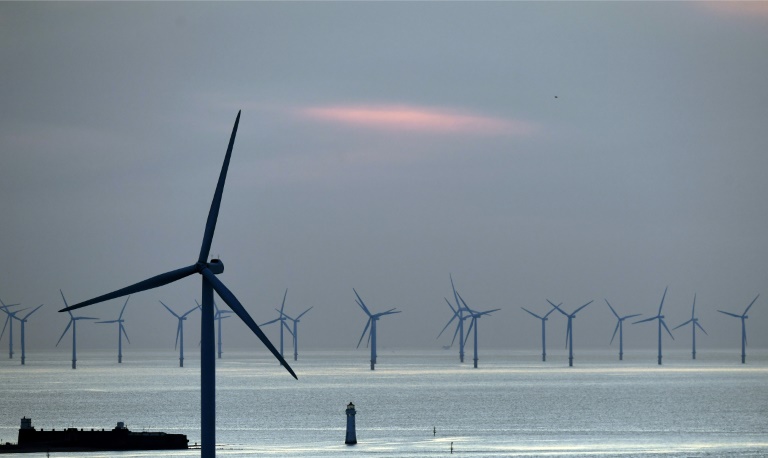
Offshore wind could become Europe’s largest single source of electricity and is set to increase 15-fold worldwide by 2040, the International Energy Agency (IEA) said Friday.
In its annual assessment of the clean energy source, the IEA said that falling costs, supportive government policy and technological breakthroughs could see as much as $1 trillion (900 billion euros) invested in growing capacity.
The EU and China are set to lead the transition towards more wind power, with offshore capacity in Europe set to surge from 20 to 130 gigawatts by 2040 under current policy and pricing.
The IEA said the EU’s capacity could jump as high as 180 gigawatts if member states reach their carbon-neutrality aims.
China’s capacity is predicted to rise from 4 gigawatts today to 110 by the same date, overtaking Britain as possessing the largest offshore wind fleet of any country.
“In the past decade, two major areas of technological innovation have been game-changers in the energy system by substantially driving down costs: the shale revolution and the rise of solar,” said IEA executive director Fatih Birol.
“And offshore wind has the potential to join their ranks in terms of steep cost reduction.”
Offshore wind currently provides just 0.3 percent of global power generation, but as prices fall and investor confidence in long-term fossil fuel projects wavers, the zero-carbon technology is projected to rise in lockstep with insatiably growing energy demand.
The IEA said energy firms needed to develop bigger and more efficient turbines that would allow offshore wind to compete for price with natural gas and onshore wind.
Emissions from energy hit record levels in 2018.




